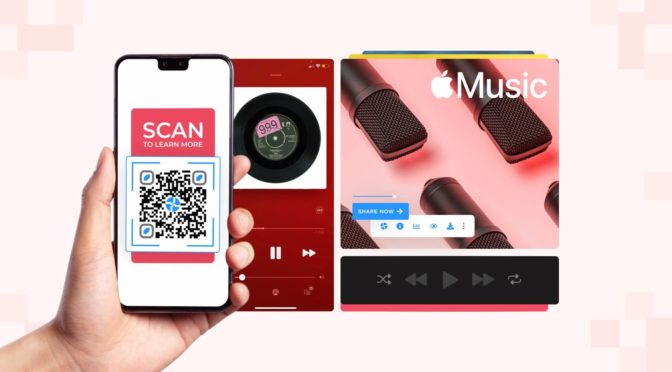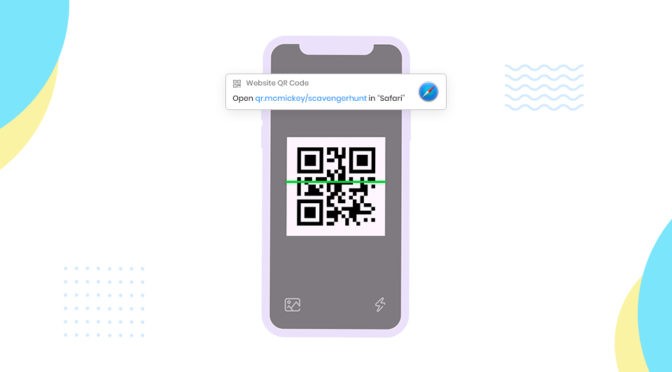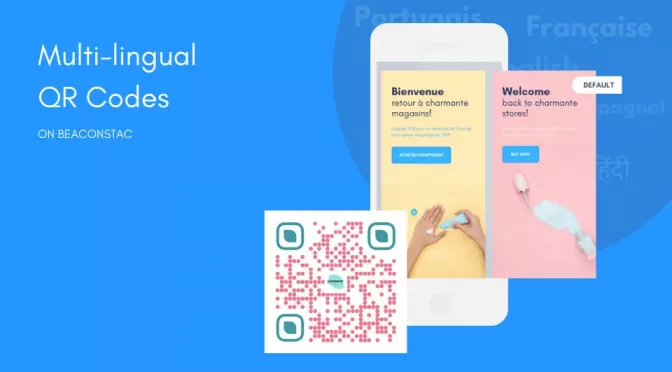💻 Key takeaways:
1. QR Codes embedded in TV commercials offer a seamless transition from the TV screen to the digital world. Viewers simply scan the QR Code with their mobile device to access additional content, promotions, or websites.
2. QR Codes in commercials boost engagement by encouraging viewers to actively participate and learn more. Use a dynamic QR Code to update content or redirect viewers to different pages based on specific campaigns. This can increase website traffic, app downloads, or product purchases.
3. Some best practices to follow while using QR Codes for TV commercials include keeping it simple and clear with a strong call to action. Ensure the code is large enough and scannable at different viewing distances.
TV commercials aren’t going anywhere anytime soon, given that TV advertising revenue is expected to reach $81 billion by 2025.
Technologies such as QR Codes have gained momentum and grown mature over the past decade.
Brands are now looking for newer ways to ride the tech wave and upgrade their television advertising strategy.
Enter QR Codes in TV commercials.

Since QR Codes are a versatile technology, adding them to television commercials lets your viewers connect with your brand through an effortless and immersive experience.
Whether it’s for shopping, unlocking an AR experience, or driving users to your website, adopting QR Codes for your TV ads engages your audience and enables more digital interactions with your brand.
If you’re wondering how to leverage this technology to bolster your business’s TV ad revenue, read on to know how to do it right.
Table of contents
- QR TV commercials that created a lot of buzz
- How do QR Codes work on TV?
- Why are they becoming popular?
- Best practices for using QR Codes during TV commercials
- QR Codes in TV commercials: The last word
QR TV commercials that created a lot of buzz
#1 Coinbase’s QR Code TV ad for the Super Bowl

Coinbase, an online cryptocurrency platform, released a one-minute QR Code ad to announce their latest promotion – $15 worth of free Bitcoin for new signups and a $3 million giveaway that existing customers can take part in.
Users can scan the bouncing QR Code (reminding us of the popular bouncing DVD logo) to access the platform’s promotional website and enter the giveaway set to expire on February 15.
This campaign sparked a lot of interest from its viewers, causing the website to crash due to the influx of site visitors.
Due to the timebound nature of the campaign, it caused a roadblock for many excited users looking to access the promotion but couldn’t since the website was down.
In fact, other companies like Meta and TurboTax were quick to join in and display their own bouncing QR Code to promote their VR experience and homepage, respectively.
If you’re a marketer looking to implement a QR Code TV commercial, here is the key takeaway from this campaign –
While garnering a whopping amount of site traffic is ideal, it’s best to be well-prepared for the tidal wave of users coming in to participate in your brand’s promotion.
We highly recommend website beta testing to handle a large amount of traffic at any time.
It’s best to have a reliable QR Code platform that functions well and can bear the load of numerous scans. This way, viewers can grab the best deal, and your campaign can gain effective traction without any bottlenecks.
Create QR Codes for TV commercials
Modernize your television ads and engage your audience using QR Codes for TV commercials.

#2 Avocados From Mexico’s digital QR Code TV commercial

Avocados From Mexico (AFM) launched a virtual home called the ‘House of Goodness’ as part of their Big Game campaign for the Super Bowl, hosted by NFL star, Drew Brees.
The virtual house consists of many experiences, one of them being the brand’s Big Game ad.
The ad features a QR Code that lets viewers scan to order the brand’s avocados right from their couches.
Since the Super Bowl is known to be the biggest avocado season of the year, AFM wanted to make their products easily shoppable.
This campaign further shows that connected digital experiences create a memorable impact among consumers.
#3 Burger King’s infamous QR Code on TV

We can’t talk about QR Codes on TV commercials without mentioning Burger King’s ‘QR Whopper’ campaign.
The brand’s TV ad displayed a floating QR Code that viewers had to catch and scan.
Upon scanning, they were taken to the Burger King app to grab coupons for a free Whopper burger.
This gamified experience let customers stay connected with the brand during the pandemic, and promoted the brand’s app successfully.
Other popular brands like NBCU and Netflix also use QR Codes on TV ads to connect with and engage viewers. Check out our blog on shoppable QR Codes to read all about it!
How do QR Codes work on TV?
QR Codes present a highly interactive way to shop on TV. TV advertisements and commercials have traditionally been one-way traffic and usually use story-telling in different formats to get people to buy a product. But the digital world is more subtle; people want less distraction now in the middle of their entertainment. Ad-free and seamless content, like streaming on Netflix, is what they prefer and is what the TV is competing with.
QR Codes have emerged as a way more effective tool for businesses to place advertisements and promotions recently. They are minimally disruptive in the sense that they are shown to viewers while they watch their content, without any break. Viewers can scan these QR Codes as they watch their favorite show, engage with the ad, and browse products.
💡Fun Fact:
Over 90% of business leaders anticipate increased QR adoption across sectors.
Explore more fascinating insights in our State of QR Code Report!

Why are they becoming popular?
Despite massive attrition to new media platforms, TV still rules as a major medium for advertisement. But there’s a possibility that streaming and OTT platforms may overtake TV as the king of the ad platform in the near future.
While the gap between ad space between the TV and digital media is narrowing, experts suggest that digital is not likely to overtake TV before 2027-28. This leaves a wide opening for brands to leverage the best of both worlds. QR Codes are an effective technology to leverage this combination of TV and digital as they allow for a smooth user experience.
Another reason QR Codes are taking off is the users’ tendency to use their phones while watching TV or streaming a movie. This allows a chance to engage audiences by scanning a simple code; without having to change the channel, stop the movie, open a browser, or download a new particular app.
Best practices for using QR Codes during TV commercials
Deploying QR Codes for TV ads brings with it a whole set of etiquette and norms. Here are a few that you must be mindful of in order to maximize the impact and create the best user experience.
Add instructions
It would be futile to deploy a QR Code without a clear and simple call-to-action (CTA) for users to follow. Assume that a viewer is engrossed in their favorite TV show when your ad pops up with a QR Code; you must tell them what to do with it. Framing the QR Code and adding a simple text like “Scan the code for an extra 10% discount” or “Scan to shop” will nudge the viewer to act.

This ad does a great job of giving clear instructions on what the viewer should do with the QR Code and what it will result in. The added visual of the mobile and camera to explain how to scan the QR Code are also a great addition.
Go for dynamic over static QR Codes
Dynamic QR Codes are much more versatile and pack more information per pixel than static QR Codes. They are also easily scannable and can be customized as per need, which is not always possible with a static code. Dynamic QR Code generators can be used to create the perfect code for your ad.

Enhance visibility with higher contrast
The TV screen is constantly changing, and depending on the show, a lot can be happening on the screen simultaneously. Imagine a reality cooking TV show that has a timer, the name of the contestant, and the name of the dish all at the same time. Making sure that viewers take notice of the QR Code requires placing it on a contrasting background. Naturally, a dark-colored QR Code with a white background works best. Or, have a white QR Code on a dark background.
Uniqode’s QR dashboard has a real-time contrast checker to prompt scannability scores.

Choose the location wisely
Do not deploy the QR Code bang in the middle of the screen where it tempers with the viewing experience; this is strictly discouraged and defeats the purpose. Choose a location where you want to show your ad that is the least invasive and easy on the eyes. Place the QR Code prominently within the commercial, often in a corner or as a graphic overlay, ensuring visibility and prompting viewers to take action. Usually, banners towards the bottom or side work best during a show. When the QR Code is used as a part of a bigger ad, it can be placed in the center for greater prominence.

Don’t keep it moving
Scanning a QR Code shouldn’t be like hitting a running target. The ad, code, and CTA instruction should be at a fixed location on-screen and for long enough to let the viewer register and scan it. If you can’t get the required duration, ask viewers to pause for a second and scan the code. This can be done either via written text, voice, or little animation.
Cut it the right size
Since the TV screen size and the distance the audience maintains from the screen varies significantly from viewer to viewer, it can be tough to choose the right size.
The recommended distance for TV viewing is 3X the size of the TV screen.
The simplest way to calculate the size of a QR Code is using this formula:
QR Code minimum size = Scanning distance/10
This also means,
QR Code minimum size for TV = (3 x size of the TV screen) / 10
Time it right
TV ads are considered a nuisance by most and a disruption to their otherwise entertaining experience. QR Codes should not add to the injury but find ways to mitigate this feeling. The time depends on the type of CTA, the show, and the relevance of the content. For example, it would be counter-productive to ask viewers to scan a code during the last few minutes of a sports match or when a movie is about to end – that’s when they are the most engrossed.
Align your audience and program
This one’s easy to get right. Customer-facing business brands comprehensively study their target demographics and their choice of programs to plant their ads for maximum response. For example, you are more likely to see ads for energy drinks and sports shoes during matches and tournaments. The same rule applies for QR Code ads; analyze your demographic and the programs they are most likely to watch before you decide to place the advertisement.
Create a quiet zone around the code
To separate the pixels of the QR Code from other visuals on the screen, maintain a ‘quiet zone’ around it. This will ensure that audiences are able to scan it instantly as it becomes easier to scan the code. If you don’t add a quiet zone, your QR Code might just have a high rate of failure.

QR Codes in TV commercials: The last word
As our TV viewing habits, sources for entertainment, and preferences for different platforms evolve, advertisements and promotions will have to keep up. QR Code-based commercials on televisions have enormous potential for businesses to directly engage with the most relevant demographic, collect reliable customer data, and be creative while promoting products. With a few adjustments to the conventional TV commercial format, QR Codes can offer businesses a new avenue for marketing and customer engagement.
Ektha is a QR code expert with years of research and analysis into the evolution of QR codes. Having written over 70 in-depth articles on QR technology, she has developed a comprehensive understanding of how QR codes are transforming industries. Her insights, including The State of QR Report, have been featured in leading publications. With a passion for simplifying complex topics and providing actionable strategies, Ektha helps businesses leverage QR codes to enhance their ‘phygital’ connections.














